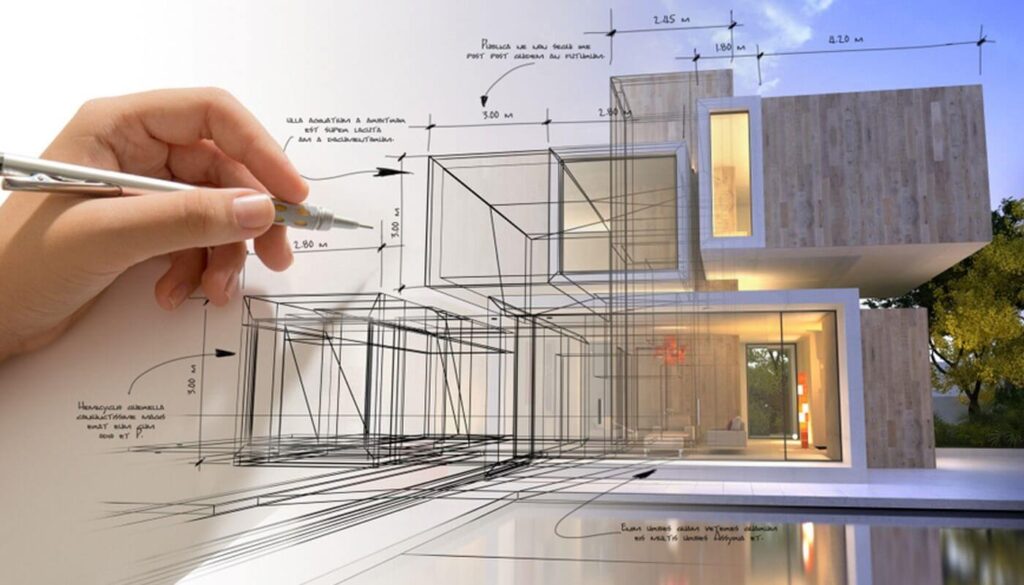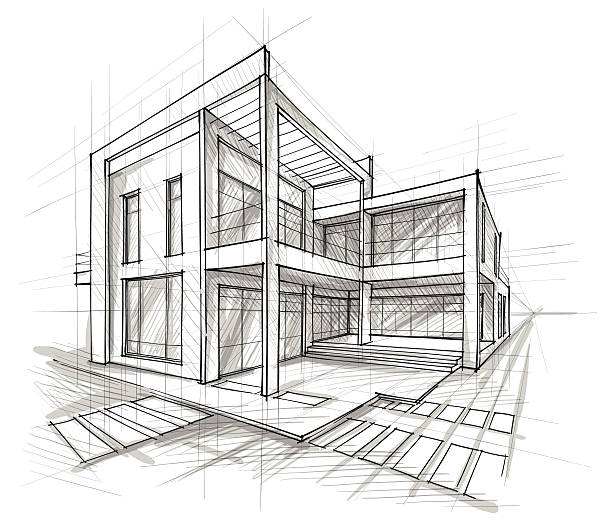The Impact of Technological Improvements on the Design Practices of Contemporary Architects
The quick advancement of technical tools has actually substantially reshaped the design landscape for modern engineers, cultivating extraordinary levels of innovation and sustainability. The assimilation of Building Information Modeling (BIM), parametric layout, and expert system has not only structured partnership amongst diverse groups yet also redefined task implementation. Nonetheless, as designers welcome these improvements, they are confronted with intricate challenges that can impact their innovative procedures. Discovering these dynamics exposes a nuanced interaction between modern technology and traditional style methodologies, prompting a closer exam of what the future holds for architectural methods.
Evolution of Architectural Tools
How have building devices changed the style and building processes over the centuries? The development of architectural devices has actually significantly influenced the effectiveness, precision, and creative thinking of layout and building and construction.
With the development of the Renaissance, the introduction of the compass and the protractor marked a pivotal change. These devices enabled engineers to attain higher accuracy in their styles, assisting in the development of more intricate and proportionate structures. The Industrial Transformation even more transformed architectural practice with the introduction of mechanical tools and materials, permitting for larger and more enthusiastic jobs.
In the 20th century, the development of computer-aided layout (CAD) software application transformed the landscape as soon as again, supplying architects with extraordinary abilities in modeling and visualization. Today, advanced devices such as Building Info Modeling (BIM) and parametric design software program continue to press the boundaries of building advancement, enabling an extra integrated strategy to style and building and construction procedures.
Enhanced Cooperation in Design
As innovation continues to progress, enhanced partnership in layout has actually ended up being a keystone of modern building practice. The combination of electronic tools such as Building Information Modeling (BIM), cloud-based systems, and advanced visualization software application has changed the means architects, engineers, and stakeholders connect throughout the style process. These tools assist in real-time interaction, allowing teams to share ideas, alterations, and feedback promptly, despite geographical place.

In addition, interdisciplinary cooperation has been streamlined through these technical innovations, enabling engineers to function a lot more carefully with other professionals, such as urban organizers and ecological experts. The result is a more natural technique to create that takes into consideration numerous point of views and expertise. Inevitably, boosted collaboration in design is not just a pattern; it is important for developing ingenious, functional, and cosmetically pleasing style in a significantly complicated globe.
Sustainability Via Innovation
Sustainability in style has progressively become linked with technical development, driving the sector toward ecologically liable practices - cda architects. Contemporary designers are leveraging sophisticated modern technologies to reduce environmental effect while boosting the efficiency of buildings. One popular instance is making use of Building Details Modeling (BIM), which enables specific planning and source allotment, lowering waste throughout building and advertising power effectiveness my latest blog post throughout a structure's lifecycle
Furthermore, wise materials and energy-efficient systems are being integrated right into layouts to optimize resource use. Technologies such as solar batteries and green roof harness sustainable energy resources, contributing to decreased carbon footprints. Furthermore, the application of man-made knowledge in design processes allows designers to mimic and examine energy usage, directing decisions towards even more lasting end results.
The assimilation of lasting innovations not only lines up with global environmental objectives yet additionally fulfills an increasing need from customers for green remedies. As designers accept these developments, the focus changes in the direction webpage of producing areas that are not only cosmetically pleasing however likewise functionally sustainable, therefore redefining the criteria of contemporary architecture. This way, innovation works as a catalyst for sustainability, making it possible for designers to develop buildings that regard and improve the native environment.
Challenges in Execution
While technical improvements in architecture hold fantastic guarantee for enhancing sustainability, their execution typically experiences substantial difficulties - cda architects. One primary challenge is the steep discovering curve connected with new modern technologies. Engineers and building professionals may require considerable training to efficiently make use of advanced software application and tools, which can postpone project timelines and boost costs
Furthermore, the integration of emerging modern technologies, such as Building Details Modeling (BIM) and sustainable materials, often requires cooperation across multidisciplinary groups. This collaboration can be impeded by distinctions in know-how, workflows, and communication designs, bring about potential disputes and inadequacies.
Financial constraints further complicate the fostering of cutting-edge technologies. Numerous architectural companies, specifically smaller sized ones, may lack the resources to invest in innovative devices, restricting their capacity to take on larger companies that can manage such financial investments.
Furthermore, regulative structures and building click here for more ordinance may not keep pace with technological improvements, developing obscurity and potential compliance issues. This difficulty can inhibit engineers from totally welcoming brand-new modern technologies, as the threat of non-compliance might surpass the advantages. Resolving these execution difficulties is important for the successful integration of technical innovations in modern architectural practices.
Future Trends in Style
The obstacles connected with the implementation of new modern technologies in design have triggered a reevaluation of future trends within the sector. As designers navigate concerns such as sustainability, urbanization, and social equity, they are significantly taking on ingenious technologies to enhance design performance and environmental performance.
One famous pattern is the assimilation of man-made intelligence (AI) in the layout process. AI devices can examine vast datasets to educate design choices, improving both creative thinking and performance. Structure Details Modeling (BIM) proceeds to evolve, making it possible for real-time cooperation amongst stakeholders and helping with streamlined project management.
Sustainable layout practices are likewise obtaining momentum, with engineers focusing on adaptive reuse and regenerative style concepts that reduce source consumption and waste. The consolidation of clever materials and renewable resource resources will even more boost the resilience of buildings when faced with environment change.

Conclusion
Technological developments have actually substantially improved building layout techniques, helping with boosted precision, cooperation, and sustainability. The combination of devices such as Building Info Modeling and parametric design software application, alongside artificial intelligence and clever materials, equips engineers to deal with intricate challenges extra efficiently.